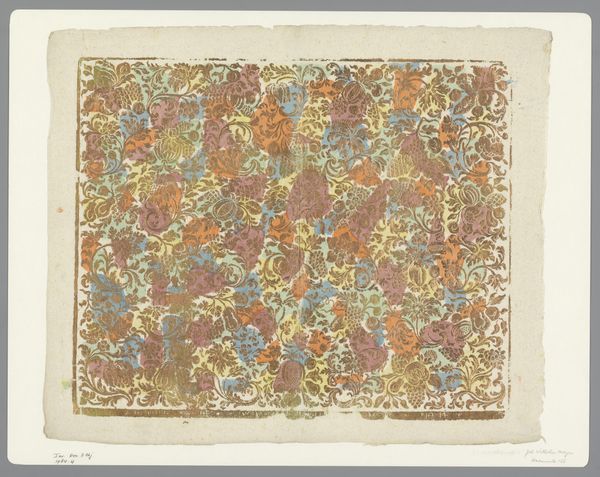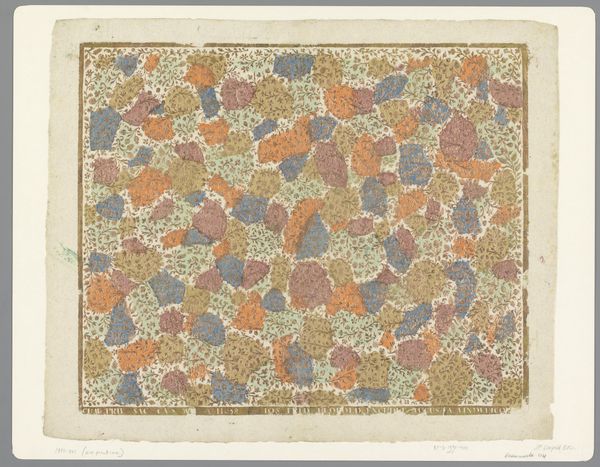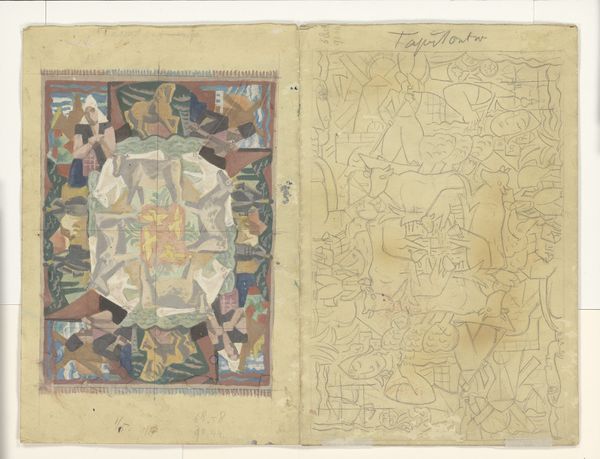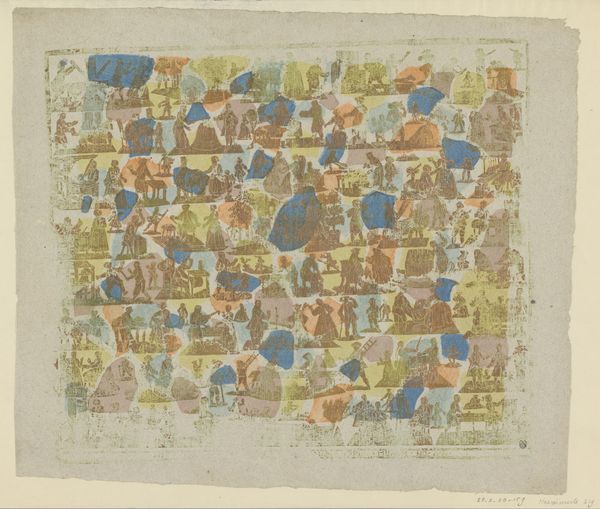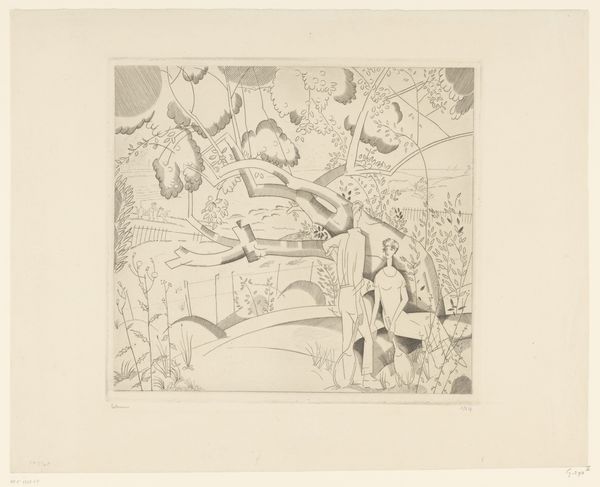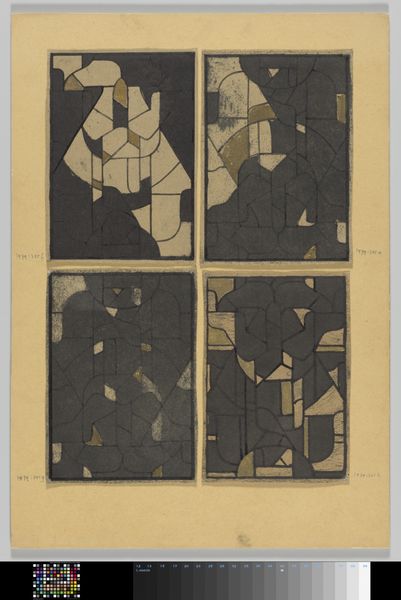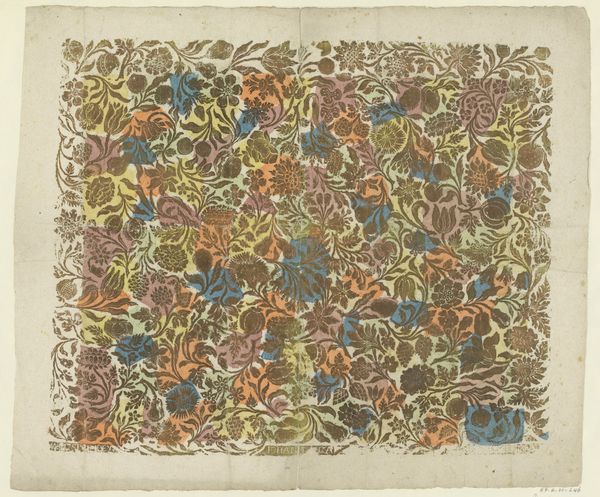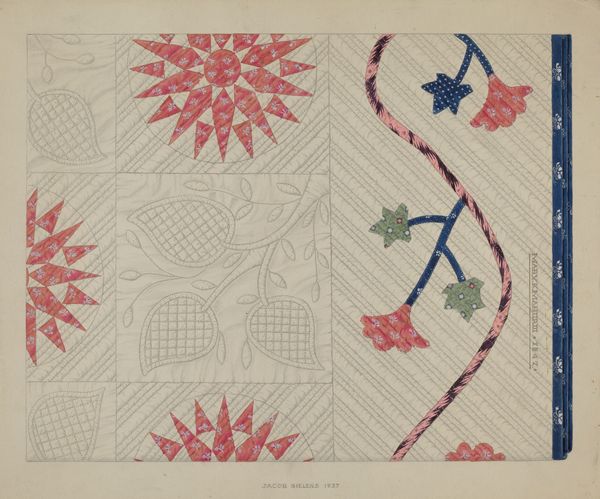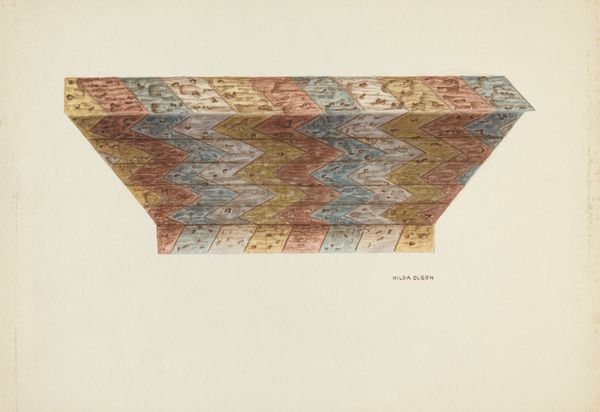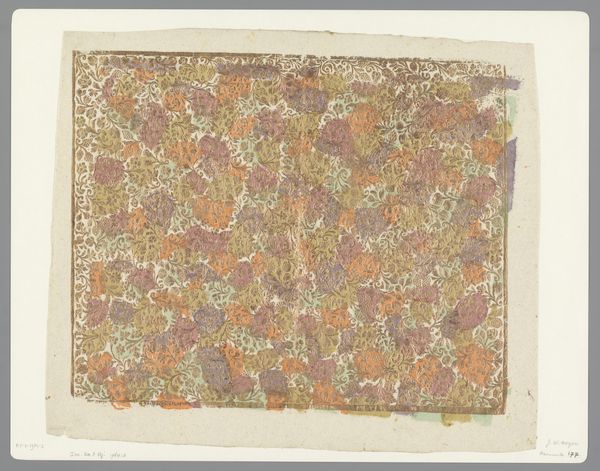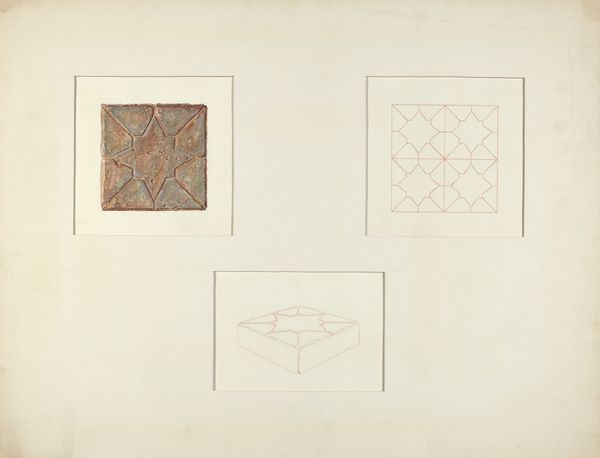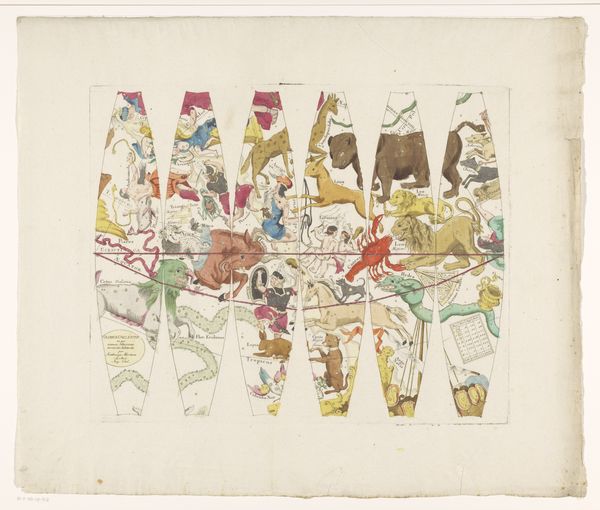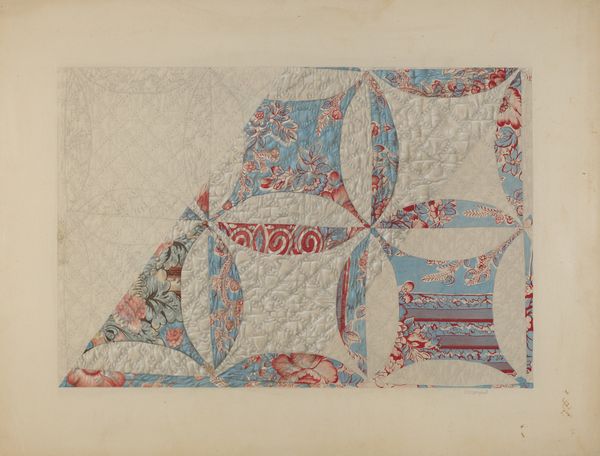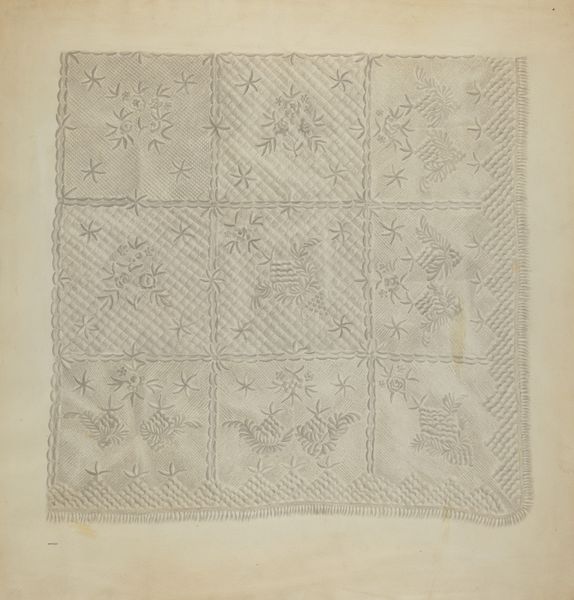
drawing, textile, watercolor
#
drawing
#
textile
#
watercolor
#
folk-art
#
watercolor
Dimensions: overall: 22.7 x 28.9 cm (8 15/16 x 11 3/8 in.)
Copyright: National Gallery of Art: CC0 1.0
Editor: This is Mary Berner's "Patchwork Bedspread," made around 1937. It’s a drawing rendered in watercolor and textile, portraying exactly what the title suggests. What strikes me is the contrast between the geometric precision of the quilt and the organic, almost wild, floral border. What do you see in it? Curator: The juxtaposition you observe is quite central. Notice how the artist has meticulously structured the composition. The quilt's rigid grid of triangles is echoed, but also radically countered, by the riotous floral arrangement below. Semiotically, this contrast could signify the tension between order and chaos, control and freedom. How does the artist handle the technical aspects of creating this contrast? Editor: Well, the upper quilt portion uses softer, washy watercolors, while the lower section is more precise in its linework. The quilt section’s pattern almost feels random, contrasting with the repeating stylized motifs of the plants underneath. It’s not immediately apparent if she actually made a quilt of her design. Curator: Indeed. Note the flatness of the picture plane. While the floral border could suggest depth through its layering, the overall effect remains decidedly two-dimensional, a clear rejection of illusionistic space. It appears less interested in the material quilt as it exists in reality, and more the pure arrangement of forms. Is this convincing enough, from a purely formal perspective? Editor: Perhaps, yes. Viewing them together—color versus monochrome, the hard versus the soft – one starts reading the image less as a realistic representation, and more as…almost a visual game? Like two separate artistic experiments forced to co-exist? Curator: Precisely. The 'game' lies in decoding the visual language, not in merely recognizing the subject matter. Ultimately, Berner is manipulating artistic elements to engage the viewer in a sophisticated dialogue about form and content. Editor: I'm struck by how relevant purely visual observation can still be. It shifts our focus from just 'seeing' to truly 'reading' the image. Curator: And by prioritizing these relationships of color, composition, and medium, we see art becomes more than just documentation, or description, but is elevated to the level of an expressive idea in itself.
Comments
No comments
Be the first to comment and join the conversation on the ultimate creative platform.
